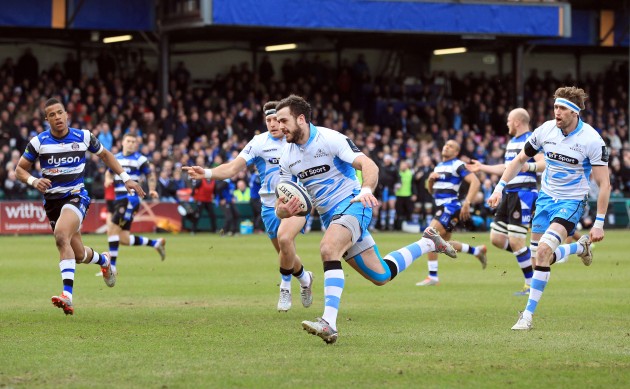A revolutionary knee-surgery technique could have been be the answer to Alex Dunbar's and Scotland's problems, writes Richard Bath.
When strong-running Scotland centre Alex Dunbar damaged his knee two days before the Calcutta Cup, it was a devastating blow for Scottish rugby. Not only did one of the standout backs of the championship miss the Twickenham game, but the diagnosis of a ruptured anterior cruciate ligament has put his participation in this autumn’s World Cup in grave doubt given that the injury requires surgery, and a six-to-nine-month recovery period. However, this needn’t have been the case.
Dunbar underwent an ACL reconstruction this month, but he could have gone for a ground-breaking surgical technique pioneered by a former Scottish Rugby Union surgeon, Professor Gordon Mackay. The technique is changing the prognosis for injured rugby players such as Dunbar. The use of Mackay’s internal brace technology could accelerate a player like Dunbar’s recovery period to the point where they is back playing before the end of the season. As it stands, Dunbar will struggle to be anywhere near peak fitness by the time Scotland take on Japan at Kingsholm on 23 September.
The technique involves inserting small biodegradeable screws into the bone either side of the affected joint, and connecting them with what is effectively a tiny bungee cord made of a super-strong polymer. The brace stabilises the joint and allows the patient to begin light exercise within a week, and because there’s no plaster cast and none of the usual loss of muscle condition, instead of taking 16-24 weeks to recover full function after a conventional ligament/tendon reconstruction, an internal brace will bring that time down to an average of 8-12 weeks. Not only that, but because of the lack of grafts, injured sportsmen who have undergone an operation using an internal brace will not experience the arthritis associated with traditional reconstructions, in later life.
Although Mackay has found that the technique works on high impact sports such as judo, skiing and football, with clients fast-tracked back into action including skier Alain Baxter, footballer Craig Moore and Olympic judoka Gemma Gibbons, his first internal brace patient was a young Scottish rugby player, and the results in rugby have been consistently stunning.
Take, for instance, young Hawick three-quarter Rory Hutton, who sustained grade three ligament damage to his ankle during a BT Premiership league match. After a prompt operation in which professor Mackay inserted an internal brace, Hutton was running three weeks later at 50% body weight on an anti-gravity treadmill, and played a league match for the Borders club eight weeks to the day after he was taken off on a stretcher.
Perhaps even more remarkable is the case of another Scottish player, Nick Binning of Hillfoots, who suffered what would once have been a catastrophic, career-ending knee dislocation that was further complicated by severe internal damage to three ligaments plus a fractured bone. Instead of taking a year off – which is the minimum amount of time to recover from such an injury, if indeed the player ever recovered – Binning was back running after seven weeks, a remarkable testament to Mackay’s skills.
Although Mackay operates across most sports – as well as the SRU, he has worked with Rangers and Celtic football clubs, Scotland’s Olympians via his tie-up with the Scottish Institute of Sport, and was on duty at both the Commonwealth Games and Ryder Cup – rugby remains uniquely placed to benefit from his new technique, as Dunbar may well find out in the coming weeks…
For more information, and videos of reconstructions and rehab, see www.mackayclinic.co.uk






